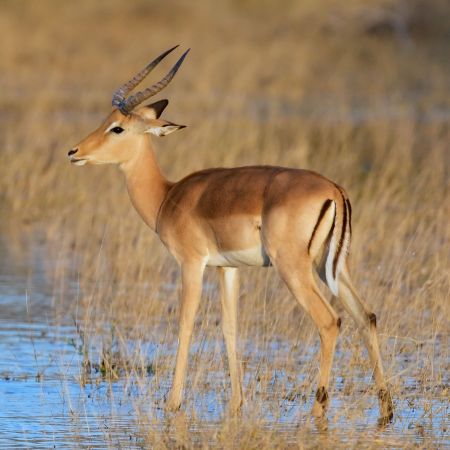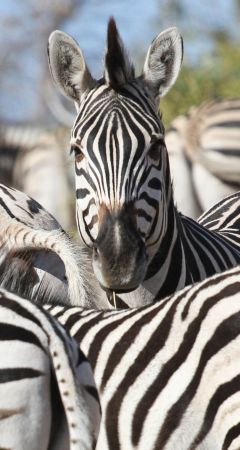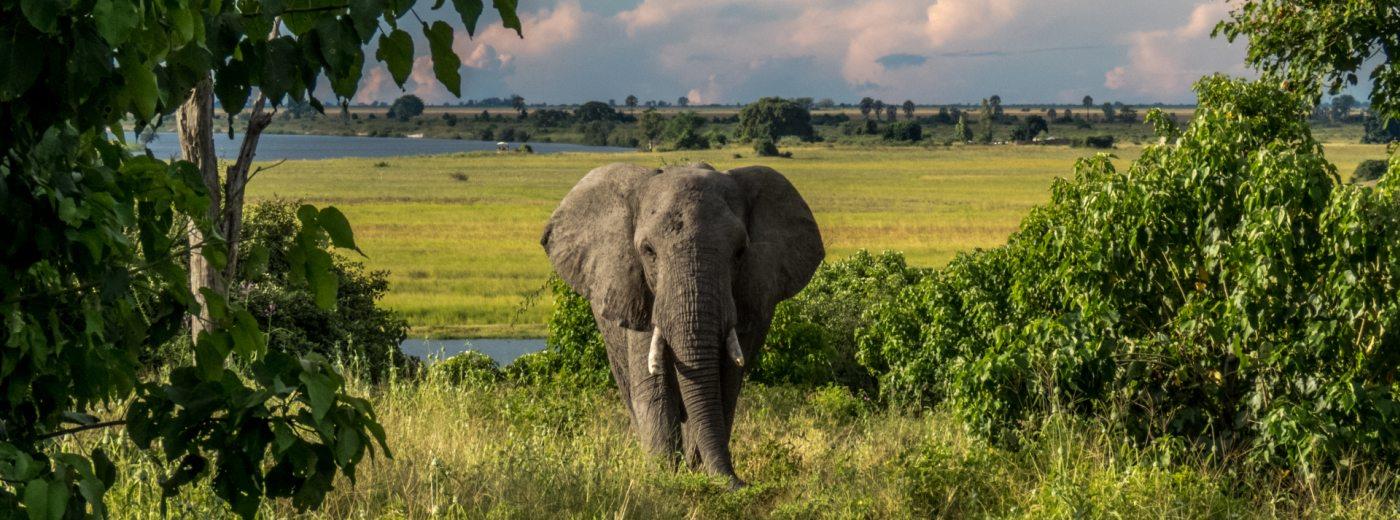The best months to visit Botswana
Botswana is actually a year round destination, so it really does depend on where you want to visit and what you want to see and do as to when is the best time to plan your trip for - plus also how much you want to spend.

Winter Months (May to October)
For the majority of people, going on safari is the main reason for a trip to this country, in which case, the dry winter months (late May through to October) would be the best time to visit.
Practically no rain falls at all, so because it is so dry, the grass and the bush wither, making for better game viewing in terms of being able to spot the wildlife. In addition, the animals are more dependent on water, so the Chobe Riverfront, Savuti and Okavango Delta regions are just alive with wildlife.
These are also the best months to visit the Okavango Delta if you want to enjoy a mokoro adventure, as the Delta experiences its highest water levels from May to September every year with the flood waters that come down from the Angolan highlands. As water is generally more scarce, the wildlife flocks to the flooded waterways. There is nothing quite like paddling silently on a mokoro to see an elephant ahead of you with his trunk dipped in the water taking a long drink!
However, because this is widely known to be the best time to visit, this is also the peak period in terms of prices/rates.
The days are pleasantly warm and sunny, but the nights do get very cold, with temperatures between June and August in particular dropping to below freezing on some nights - so on morning and evening game drives you will need plenty of layers to keep warm!
Summer Months (November to April)
November generally sees the start of the hot summer, with the summer rains making their first appearance along with the first of the mosquitoes.

The rains, higher temperatures and mosquitoes last through until April, which also means that the wildlife is more dispersed as water is readily available over a larger area. The grass also grows long, again making wildlife spotting more challenging. The heavy rains can make some roads impassable, especially in the Chobe National Park.
Botswana plays host over these months to a zebra migration - the actual timings are determined by the rains, but usually the migration occurs between November and December when the zebras move from the rivers in the north around Chobe and the Delta in search of the fresh grass and waterholes further south in the Nxai Pan National Park. The migration is always followed by large numbers of predators, making this an exciting time to be here. Come March/April time, they are on the move again back to the permanent water supplies in the north as the south enters its dry season.
These months are a great time for bird watching, especially in the Okavango Delta, as the local birds will breed during these months and migrant birds return to the region.
The floodwaters in the Delta have receeded, so despite the new rain, this is still the driest time in the Okavango Delta itself. As a result, only some Delta lodges can offer water based activities during this season - namely those near a permanent river or water channel.
This is also the perfect time for a visit to the Central Kalahari and Makgadikgadi Pan, as huge herds of wildebeest, springbok, oryx, eland and kudu move onto the now green pans and plains to graze and give birth. Not surprisingly, the predators such as cheetah, wild dog, jackal, leopard, hyena and lion are not far away either!
The advantage of travelling to Botswana at this time, however, is that a lot of the lodges drop their rates, making a safari here more affordable.

